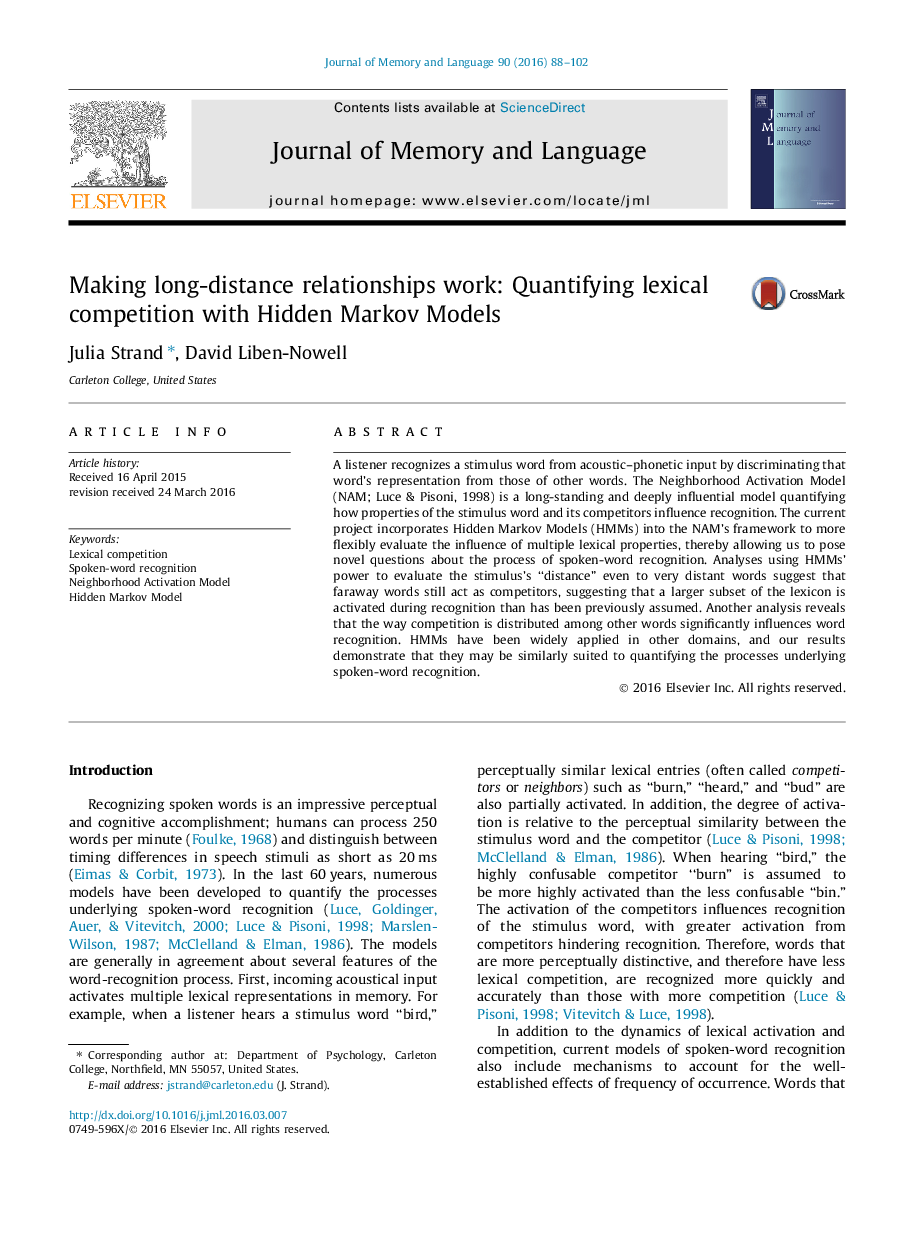| Article ID | Journal | Published Year | Pages | File Type |
|---|---|---|---|---|
| 7296892 | Journal of Memory and Language | 2016 | 15 Pages |
Abstract
A listener recognizes a stimulus word from acoustic-phonetic input by discriminating that word's representation from those of other words. The Neighborhood Activation Model (NAM; Luce & Pisoni, 1998) is a long-standing and deeply influential model quantifying how properties of the stimulus word and its competitors influence recognition. The current project incorporates Hidden Markov Models (HMMs) into the NAM's framework to more flexibly evaluate the influence of multiple lexical properties, thereby allowing us to pose novel questions about the process of spoken-word recognition. Analyses using HMMs' power to evaluate the stimulus's “distance” even to very distant words suggest that faraway words still act as competitors, suggesting that a larger subset of the lexicon is activated during recognition than has been previously assumed. Another analysis reveals that the way competition is distributed among other words significantly influences word recognition. HMMs have been widely applied in other domains, and our results demonstrate that they may be similarly suited to quantifying the processes underlying spoken-word recognition.
Related Topics
Life Sciences
Neuroscience
Cognitive Neuroscience
Authors
Julia Strand, David Liben-Nowell,
